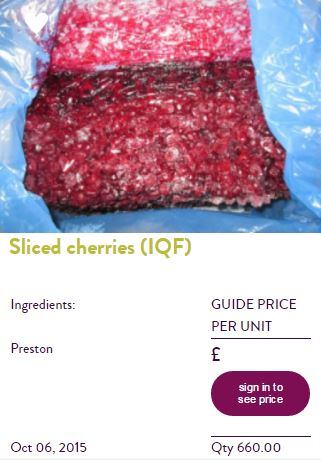From ten tonnes of Oreo-style cookies to 32 buckets of Hollandaise sauce; from 60 bottles of Merlot wine to 5000 sealable takeaway boxes, TakeStock is a UK start-up that offers a digital marketplace for food industry actors to trade unsold stock that is clogging up warehouses and storerooms.
"We wanted to provide a new option to dispose of stock before calling the clearance specialists or biomass guys,” the company says. “There is so much value locked up in the food industry; €20 bn across Europe alone. We believe there is a buyer out there for all of it and if we can just find a way of connecting the buyer with the seller, we can unlock that trapped value."
CEO and co-founder, Campbell Murray told FoodNavigator one of the main inspirations behind the start-up was to reduce food waste. “Two of our founders have other food industry businesses and were shocked by the waste they saw. When they asked the owners why, it became apparent that there was no easy way to find enough buyers.”
TakeStock's top tips for success
1. Make the batch size as small as possible.
2. Have a realistic guide price - most food products in particular are worth a max of 50% of their 'new' price from regular wholesale channels.
3. Use a good, realistic photograph.
4. Avoid collection only unless it’s a large expensive item. Small items that are collection-only sell poorly.
5. Respond quickly to offers.
There is no sign-up charge but TakeStock takes a commission from each sale and, like Ebay, a seller can improve his or her rating by providing a good service to build up positive feedback.

TakeStock has three categories – food & beverage, food service & packaging and equipment – with food and beverage accounting for around 90% of all its transactions. This category is further broken down into ingredients; fresh fruit and vegetables; finished goods; frozen food and beverages.
Murray said that an increasing number of sellers were coming from outside the UK and currently made up around 10% of traffic, but that for the moment they were focused on perfecting their business model in the UK before an international was on the cards.
One of the products, listed as ‘raw honey from Romania’ had a link back to its own website, which was removed by the team. “We encourage transparency and bringing the seller’s brand to the table to provide comfort to the buyer however we moderate to remove such content. There is a public Q&A capability in the system and once an offer is in flow, the buyer and seller have a private exchange platform to negotiate the deal,” said Murray.
Recent sales included 10 tonnes of Oreo-style unbranded biscuits that were used by a private label ice-cream brand.
